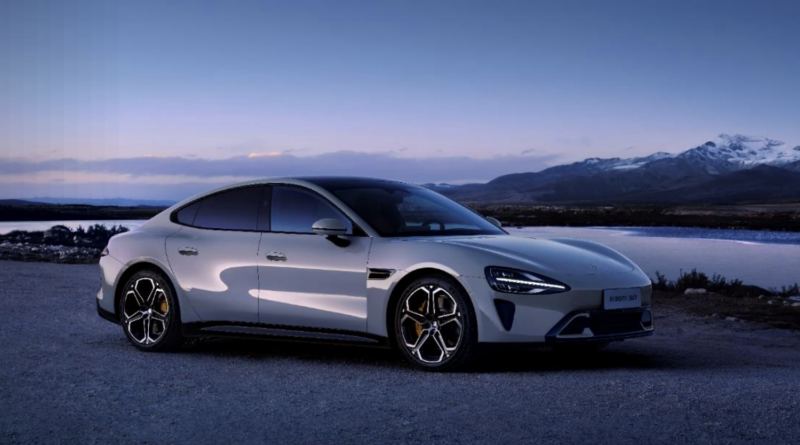Xiaomi Reports 17.1% Gross Profit Margin & Shocking Growth from “Smart EV & Other New Initiatives” in Q3
Xiaomi has just stormed into the electric vehicle arena, or “smart electric vehicle” arena, as several high-tech EV companies in China like to say. Yes, Xiaomi is mostly known for its smartphones — it’s second only to Samsung in annual production of smartphones. But as we’ve argued for years, giant tech companies, one would think, could easily enter the electric car market and almost immediately do well thanks to their strong brands. After all, modern electric vehicles are often seen as “cell phones on wheels.” Well, Xiaomi has done just that, and it’s already doing well.
According to the company’s third quarter report, published today, Xiaomi made $1.34 billion (9.7 billion RMB) in revenue last quarter on “smart EV and other new initiatives,” which was a 52.3% increase quarter over quarter (QoQ)! Perhaps most notable of all, though, is the company is already making 17.1% gross profit margin on these new products! Holy moly — watch out legacy auto, and watch out everyone! That 17.1% is also up 1.7 percentage points QoQ.

Xiaomi delivered 39,790 electric vehicles to customers last quarter, and already has 138 EV sales centers across 38 cities. It’s also got some serious bragging points already compared to the competition: best-selling sedan among emerging brand sedans, best-selling sedan among sedans priced above RMB200,000, best-selling sedan among mid-full size electric sedans. And no one’s even close to its SU7 in any of those categories. Impressive.
Of course, those are pretty specific categories, but nonetheless….
Just looking at how revenue compares to other segments of Xiaomi’s business, you can see how important its EVs are quickly becoming (as off frequent prominent mentions in its shareholder report weren’t enough). EVs (“and other new initiatives”) have already surpassed internet services for quarterly revenue, and they’re above 20% of Xiaomi’s smartphone revenue!
It’s almost like many of us were right and this industry is now made for companies like Sony, Apply, Samsung, and Xiaomi. At least one of them has made the big move and is capitalizing on it.
Xiaomi claims that it’s the fastest new auto OEM to produce 100,000 vehicles. That is, no new auto OEM has produced 100,000 vehicles in a shorter amount of time. It took the company 230 days to achieve that milestone.
Xiaomi was an early investor in Xpeng. Clearly, it’s been eyeing this industry for a while (and probably learned a thing or ten from what Xpeng has done in the past few years).
Along with its highly popular new SU7, it has a new variant of that because that is aimed at pulling in a lot more attention. That’s the SU7 Ultra that Max Holland recently wrote about. Introducing the car a few weeks ago, Xiaomi wrote: “Xiaomi SU7 Ultra is equipped with the same tri-motor configuration and track-optimized battery pack as Xiaomi SU7 Ultra Prototype (prototype car), delivering a maximum horsepower of 1548PS. With 0- 100km/h acceleration in only 1.98s (without one foot rollout), and a designed maximum speed of 350km/h, it is built to be the fastest four-door mass-produced car Xiaomi SU7 Ultra features a track-optimized cooling system. , ensuring it can complete two laps on the Nürburgring Nordschleife without overheating.”
“It is also equipped with a top-level braking system, achieving a braking distance of only 30.8m from 100km/h to 0. Xiaomi SU7 Ultra also comes with a peak chassis system tuned for the Nürburgring Nordschleife, delivering better chassis control and a higher control ceiling. As a four-door ‘race car’, it is track-ready straight from the factory. In addition, the Xiaomi SU7 Ultra offers multiple upgrades in smart driving, smart cockpit, safety and luxury experience. Of course it does.
Without a doubt, Xiaomi is already making its mark as a company to watch in the electric vehicle market. Will it follow the lead of BYD, NIO, Xpeng, Zeekr, and others and rapidly try to spread its wings across the globe? I have to assume it will. The company already sells phones all over the place, after all.
Have a tip for CleanTechnica? Want to advertise? Want to suggest a guest for our CleanTech Talk podcast? Contact us here.
Sign up for our daily newsletter for 15 new cleantech stories a day. Or sign up for our weekly one if daily is too frequent.
CleanTechnica uses affiliate links. See our policy here.
CleanTechnica's Comment Policy






